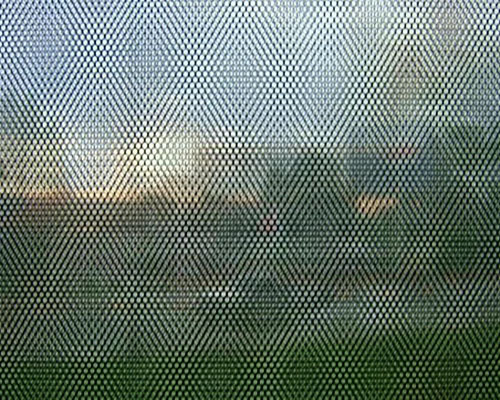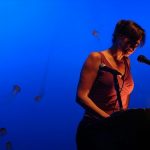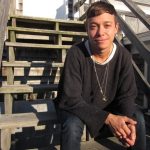Con Edison Immigrant Artist Program Newsletter, Issue No. 29
Featured Artist: Sutthirat Supaparinya
Sutthirat Supaparinya is an artist from Chiang Mai, Thailand who uses video and interactive installation to question, explore and challenge perceptions derived from the mundane world, mass media and institutional sources. Her works have been shown in numerous solo and group shows around the world – among them, the Bangkok Art and Culture Center in Thailand, the Queensland Art Gallery in Australia, the Guangzhou Triennial in China and many other venues in Germany, Japan, Korea, Italy, Burma, Romania, Taiwan, Singapore, Vietnam and the United States. She recently completed a fellowship at the Asian Cultural Council to conduct visual arts research in New York City as well as a residency at the International Studio and Curatorial Program. (For more information, please view her website at: http://www.atelierorange.info.) Karen Demavivas, NYFA Program Officer of the Immigrant Artist Project, interviewed Supaparinya about her work, time in New York, and place in community.
IAP: You have exhibited your work in the international art circuit over a number of years now. How has your Asian Cultural Council (ACC) Fellowship in the cosmopolitan hub of New York informed and enriched your experiences as an artist? What can you share about your time of research and networking here with artists and organizations in New York?
SS: Through the ACC Fellowship, I was able to come and experience the United States for the first time and expand my view of the contemporary art world beyond Asia and Europe. In a sense, this experience has completed my understanding of the international stage as it relates to my career, culture and people.
New York is a very unique and interesting city with a lot of artists and extensive support for them. I’m able to explore many different kinds of work here and I have a special interest in old, experimental films, which I’ve viewed in places like the Anthology Film Archives or Film Forum. These spaces in turn have their own special atmosphere, communities, and place in history.
In New York, I’m also able to more easily meet and network with artists I admire. For instance, I recently met Carsten Nicolei, a media and sound artist from Germany who just had an opening at Pace Gallery in Chelsea. I’ve also more comfortably connected with prominent artists from Thailand who live and work at least part of the year here such as Rirkrit Tiravanija. Our dialogue here differs from our conversations back in Thailand in that we find common ground in talking about our lives abroad and our place in the contemporary art world. We can be more critical about the state of our country and spend more intimate time together without the whole Thai social context around us. In a sense, I am more open to engaging with artists I admire when I’m here, especially with the prestigious ACC Fellowship supporting me and helping me frame my position.
I am here to experience what is out there in the NYC art world and other people’s art, which could influence my art-making in the future. However, I’m not here to create new works myself. There are many old works that have already been done very well, but on the other hand, there are also many more possibilities to develop new video/media works. So I’m learning from all of this in order to develop my message to audiences. I am also trying to find a way to manage my artistic career and financial means better so that I don’t have to make money through other means, but rather focus and sustain my own career. I’ve attended some professional development workshops here.
IAP: NYFA’s Immigrant Artist Project also offers such professional development support with the understanding that the business side of your career is very critical to the health of your art. You need to manage that well as financial needs are a constant challenge in this economic climate. How are you financially supporting yourself now in your artistic career?
SS: It’s not easy but at least my media arts skills can be applied to making money. I teach video/media art classes and I try to find any kind of job that is interesting and informs my creative career.
IAP: Can you share the diversity of support you’ve received as an artist over the past six months with help from the ACC?
SS: I think the grant itself and the connection to a diverse network of ACC Fellows from Asia practicing in a range of disciplines have been very valuable. In addition, the ACC has also referred us to relevant individuals, organizations, programs, and other activities around the city. For example, I secured my recent residency at the International Studio and Curatorial Program (ISCP) due to their partnership with the ACC. This experience has been rich in studio time, artist presentations, curatorial visits, field trips, and exhibitions. The ISCP also provides an extremely useful deadline calendar of artist opportunities from all around the world. Beyond this institutional support, we also have the freedom to seek out our own connections and collaborations.
IAP: We first met during my time as a Fulbright Fellow in Chiang Mai more than five years ago and I would say there were many cultural visitors like me (just as you are here now in New York) who passed through and engaged with the arts community there. I was struck by your 2009 installation of a banner draped over the tourist district in Chiang Mai with its provocative title and statement I Love Farang (Foreigners). For better or for worse, the work reflects on how the Thai economy relies on foreigners/tourists, including cultural tourists. Can you talk about how this statement may relate to the international art figures that fly in as cultural tourists and engage with your art community in Thailand? To what extent do they enrich and/or challenge the local context?
SS: In order to welcome mass tourism, Thai private and government projects tend to change the landscape, the beauty, and the very culture to adapt to foreign visitors, which is problematic in that we end up losing our identity. When so much of the economy is dependent on this kind of tourism, it can be catastrophic when emergencies occur such as the international airport closing down in 2009 due to riots (to which this banner work was a response). People have few other means to turn to in order to sustain themselves. This kind of tourism should be managed better by the government.
On the other hand, people who travel here for deeper intercultural exchange – as you and other artists and culture workers of your time did – can have a positive impact, especially when they take the time to develop relationships with the local people and context. When you were in Chiang Mai, there were many connectors in the arts community who bridged a dialogue between the locals and the visitors and many generative ideas and collaborations took place.
IAP: Yes, many of us were interested in socially engaged practice framed by a Buddhist philosophy and the “art of everyday life” but in the Thai rather than Western context, which rooted these daily interventions in the local rhythm of Chiang Mai.
Now you are engaging with the Thai arts community in New York. Can you please tell me about your role in organizing the recent Thai group exhibition “Siamese Connection” at Invisible Dog Gallery in Brooklyn?
SS: The exhibition was organized by the Thai Artist Alliance (TAA); I acted as a juror for the selection of approximately 20 works and as advisor for the curatorial team. The TAA is made up of a group of young Thai artists, culture workers and recent graduates of the New School, NYU, Pratt, and SVA. They work in various fields: visual arts, music, design, fashion, photography, etc. They all came together because they saw a need to share resources, connections, and to provide a platform for visibility as a community. Together, they were able to overcome challenges, secure opportunities, and better sustain themselves. They’ve been able to collaborate on both artistic and professional levels. Most of them want to stay in New York and find a way to survive and establish community here.
IAP: Do you have any advice for this younger generation of Thai artists living in New York?
SS: I think artists should always go through a process of re-evaluating themselves, their work, their audience, their community, and whatever space they are working with. It’s about questioning what may seem apparent such as mass media – you need to maintain a critical stance. One may have a goal, but there are ways to keep exploring that without repeating yourself. It is also important to share your thoughts and ideas with other artists and go out to see their work. In addition, artists need to be proactive and resourceful. For example, instead of video artists mourning over the fact that their finances cannot afford them the latest technology, they should shift their focus to the essential idea of their work and build a strong vision – from there, they can reprioritize and realize that maybe a simple camera is enough to capture that vision.
IAP: Let’s shift from your place in community to your creative process. Your work often ignites a sensorial shift in consciousness in a journey through the seemingly mundane. In your video piece Dotscape (2005), you transform the humdrum view out a window on your train ride from Bangkok to Chiang Mai into a dizzying view of an ever-shifting dot matrix of abstract urban and green landscapes accompanied by the incongruous sound of birds and insects buzzing and whirring. It turns out that you were playing with an already existing matrix of advertising stickers, which obstruct the view of the outside. Why did you further shift and transform the perception of the passing landscapes in this way? Was there a certain psychological, social, and/or emotional statement you wanted to relay?
SS: This work poses the question: Can advertising and capitalism buy our view of landscapes and change the environment? When the journey begins in Bangkok, you see how advertising changes the cityscape in general. And then when you focus in on the specific advertising matrix, it also changes your view out the window and the whole experience of the train ride. So how should we view this? Where is the critical shift in consciousness?
Then when the train pulls out of Bangkok, it leads you through forest areas, the countryside, and small villages – all the while still through the view of this obstructed window. The soundscape of the work is from a French artist who captured sounds from the forests of Southeast Asia, particularly Thailand and Malaysia. It doesn’t parallel the real sounds outside the train, but it makes sense to me in that it reflects how I dreamt about the forest while going on this journey.
This work has been shown as both a video and an installation piece. I would say that it is much better as an installation because the viewer has a more all-encompassing experience of the space. When you walk around, you experience the patterns and scenery in that moment in time from different angles depending on where you stand. When you are close to the screen, you only see the dots and not the overall image and it’s dizzying. When you step back, you can see the whole landscape more clearly and have a sense of groundedness in the image – each image is in order of what you would view on the train trip from Bangkok to Chiang Mai. However, in a sense, your perceptions and feelings continue shifting as you tag along on this journey of dynamically moving patterns through the landscape.
This installation is now on view as part of my solo exhibition entitled “Hypothetical” (October 6 – December 10, 2011) at Media Noche Gallery in East Harlem.
IAP: Congratulations, this solo exhibition is a great conclusion to your time here. Thank you.





